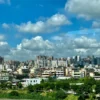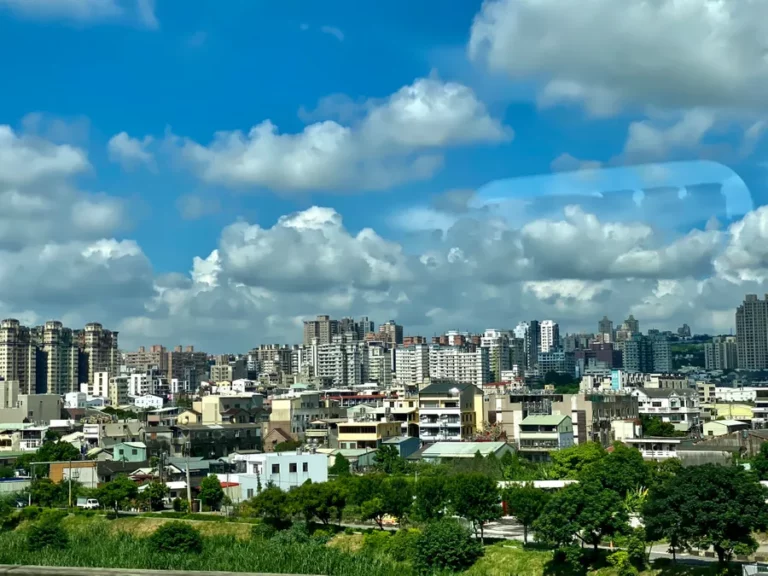author Guo Qiongying – independent review
Recently, due to work, I have frequently traveled with government departments across the country to learn about the implementation effectiveness of centrally subsidized local budgets. In the past few months, from outlying islands to the main island, from remote villages to urban cores, from coastal fishing villages to mountain tribes, we have seen from different perspectives We encountered many situations that would not be seen in the mass media, and "empathy" and "empathy" also taught key lessons to the visiting committee members.
The remote tribes have always been the focus of the Tianlong Kingdom that is difficult to get close to, but the internal sense of glory for the land in the rural areas is a different kind of dawn.
The blind spots of "professionalism"
As planning professionals or central officials, it is easy to use superior thinking or professional theories to comment on local construction. For example, it is easy for us to criticize, "Why do we need to build an urban-type square in such a beautiful countryside?" But local tribal residents feel aggrieved: "We see natural scenery every day, and children have never been to a big city. They also want to We need parks and squares like those in Taipei City..."
The committee members were dissatisfied: "The green space is very good, and a variety of trees is good for the environment. Why do we need to lay so much cement floor?" The locals thought: "We are surrounded by woods, and this small piece of cement land only takes up a little bit." Give me some space!"
Asked again, "Why should such a rigid cement revetment be built next to Shuizhen? Grass cannot grow and it hinders the habitat of organisms?" Their reason is: "Our village is almost full of old people and young children. How can we have time?" How about removing weeds and tidying up naturally grown trees? Not to mention that smooth cement roads are safer and easier for the elderly and weak residents to walk on!”
Some of these conversations were truly shocking and broke the blind spots of our so-called “professionalism”. Indeed, it is difficult to experience the other person's feelings without personally living in such an environment. In other words, if the policy is well-intentioned and the planning theory also has its basis, should we think again about how, in the top-down policy, we can adapt measures to local conditions between 0 and 1, and conduct more research that is suitable for the place, suitability, and people? How many options are available to solve the "bottom-up" needs? Including engineering technology, construction methods, materials, and even considering the "urban progressive atmosphere" that local residents desire, all can be re-dialectized.
 On Dongju Island, we see the alternative values of islanders’ life—comfort, contentment, and freedom.
On Dongju Island, we see the alternative values of islanders’ life—comfort, contentment, and freedom.
The gap between urban and rural areas cannot be bridged by injecting funds
In his "Garden Cities" blueprint, the British urban planning master Howard imagined a place with "villages in the city and cities in the countryside". Residents living in the city can enjoy the green space and atmosphere of the countryside. There are also rural-like production areas in the surrounding area, providing agriculture and animal husbandry operations necessary for daily life. This ideal garden city utopia in the 19th century was not successfully realized in the end, mainly because the living environment in reality is constantly evolving and growing, and it is difficult to build it entirely by planning. This also shows that the difficulties and resistance faced by government agencies today in vigorously promoting public housing and social housing are not necessarily due to funding issues, but rather to the need to return to humanistic life. Just like every time a typhoon damages mountain tribes, the government will propose to relocate their villages. However, unless they are forced to relocate like during the Japanese colonial period, tribal residents will eventually want to return to their ancestral homeland, even if they move temporarily.
Today, Taiwan has six urban and rural development cities. In addition to Taipei City, which was originally a municipality under the jurisdiction of the Yuan Dynasty and is all urbanized areas, the administrative districts of Kaohsiung, Tainan, Taichung, Taoyuan, and New Taipei Province all cover large areas of "non-urban land." It is also the "land under the jurisdiction of the county" in the past, and it covers diverse ethnic groups, including aborigines, migrant workers, and foreign spouses.
A community planner once said frankly to me, “Even in Kaohsiung City, there is a significant gap between urban and rural areas. The construction and development of places like Liugui, Jiaxian, Taoyuan, Namasia, and Maolin can never be compared with those of Xiaogang, Qianzhen, and Compared with Yancheng, of course, there is no way to apply unified standards. "Similarly, Taichung City's Heping District cannot be compared with the seventh phase of redistricting, Taoyuan City's Fuxing District cannot be compared with the Arts and Cultural Zone, and Tainan City's back wall cannot be compared. District is difficult to compare with Annan District. How can Ruifang, Wulai and Wanli in New Taipei City compare with Xinban Special Economic Zone? Even in the capital city of Taipei, Wanhua District, Xinyi District and Daan District have very different benchmarks.
Even the capital, Taipei, has extremely ugly corners, and those places where the sun doesn't shine need social care.
These comparative differences are not just about housing prices, but more importantly, within the same administrative district, each district has different innate development restrictions due to geography, topography, location, and phenological relationships. There are even many "villages in the city" that even have basic infrastructure such as running water and gas. Subsistence construction is still lacking. Therefore, policymakers’ understanding and strategies of public construction must not be based solely on the amount of funds allocated as their only political achievements.
Some people would say, wouldn’t it be good to provide additional subsidies to these disadvantaged areas? But usually these limited subsidies can only meet superficial needs, and there is still a long way to go to improve the quality of infrastructure and happiness in life.
Taixi Township is a so-called hollow fishing village with slow development in Taiwan, but it has incomparable sea views. How to balance the development of the local area is crucial.
It is the government's responsibility.
What is sad is that in order to show their political achievements, some rural areas spend the hard-won funds on the most superficial "cosmetic construction projects." When you walk into these towns, you may see a large painted retaining wall with no grass growing around it. The community activity center is covered with cement floors and fancy street lights, but there is no place for people (especially the elderly) to stop and rest. seats. The government has indeed invested considerable construction funds, but our urban and rural landscape is still difficult to improve.
Rural communities prefer "painting" on stone walls, old houses and campus walls. Professionals often criticize it for being too superficial, but behind the bright colors seems to reveal the voice of loneliness.
More money is not better, but it must be spent in the right place
In recent years, the government has taken the lead in forward-looking plans from the central government, and the funds invested are not "large". They are just the result of spending money in a short period of time, compressing the reasonable project construction time, ignoring the carrying capacity of the land's ecological resources, and also The executive energy of lower-level administrative staff has been almost ignored. The entire society is not thriving because of abundant funds. On the contrary, under the control of policy compliance, it is difficult for grassroots personnel to digest the "good intentions" of these high-level officials.
Young community leaders with sustainable thinking will say, don’t give us too much money all at once. What we hope is to obtain basic operating funds in the long term. Let us do a good job, grow slowly, and build our hometown with honor. In fact, there is still no shortage of conscientious and far-sighted community affairs leaders in society, and there are also many experienced, thoughtful, and affectionate affairs officers for the local community. However, when central policies make it difficult for local governments to effectively improve, learn new knowledge, and develop new technologies, many policies can only repeat the practices of decades ago with limited time and lack of correct value consensus, and continue to sink.
Even though there are funds for outlying island construction, and the public sector has invested in large-scale and obvious hardware construction, the cultural and creative regeneration on Matsu outlying islands is the result of the accumulation of local people.
I once asked foreign professionals about their local construction experience. Workers in Japan, Australia, and the United Kingdom expressed envy of our abundant local construction. A British designer said, "The funds for park renewal and construction in our town are very limited. The government said we must make good use of it, otherwise you will have to wait another 20 years next time!" But because of this, designers can actually work with the local area. To reach a consensus, the purpose must be achieved in the most economical and functional way, but also in line with local needs and design sense. What we see is not the rapid piling up of expensive building materials so that the budget execution rate can meet the target, but a kind of "construction" that is integrated into the land and homes, with warmth and local sentiments.
I still remember that after the Great Hanshin Earthquake in Japan, I visited a community in Kobe. The community organization told me: "The government only gave each disaster-stricken community 1 million yen. We are planning how to mobilize the community and use the money to effectively rebuild." "Compared to our policy of spreading money, it is actually a kind of irony. We mistakenly believe that quick subsidies can eliminate dissatisfaction and smooth out shortcomings, but what is more important is to plan how to renew local construction and upgrade national construction. These expenditures should also be used to narrow the socio-economic gap between different urban and rural areas and improve the overall environment. approach to quality and quality of life. With these observations and sincere suggestions, I sincerely hope that the central government’s decision-makers will still care about urban and rural areas in addition to political factors, and come up with wise new solutions for socio-economic and cultural sutures.
source:https://opinion.cw.com.tw/blog/profile/263/article/14051


